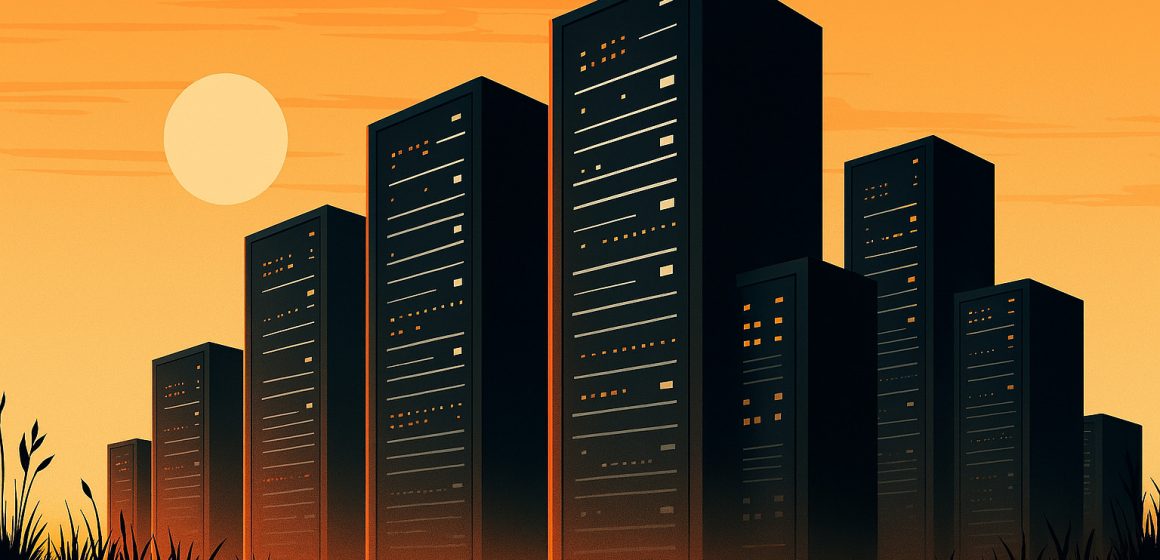The country’s data centre capacity is projected to double to 2.3-2.5 gigawatts (GW) by March 2028, reflecting buoyant demand across enterprises and consumers, according to a Crisil Ratings study.
India’s data centre industry is poised for robust expansion, with operator revenue expected to reach approximately ₹200 billion ($2.4 billion) annually by fiscal 2028. This translates to a compound annual growth rate of 20-22 per cent, driven by surging demand from enterprises and retail consumers embracing digital platforms, according to a study by Crisil Ratings.
According to the credit ratings and analytics agency, to meet this buoyant demand, installed capacity is projected to double to 2.3-2.5 gigawatts (GW) by March 2028. While capital expenditure is set to rise significantly—estimated at ₹550-650 billion ($6.6-7.8 billion) over fiscals 2026-28—credit profiles are expected to remain stable. Predictable cash flows from operational assets will help maintain leverage (gross debt to EBITDA) at a steady 4.6-4.7 times.
“The healthy revenue growth of 20–22 per cent for data centre operators will emanate from robust industry capacity addition, which is expected to double by March 2028. The incremental capacity of 1.1-1.3 GW estimated to be commissioned during fiscals 2026-28 is expected to achieve timely tie‑up backed by strong demand and India’s data centre density of just about 65 MW per exabyte, one of the lowest globally. This will translate into comfortable utilisation of 90-95 per cent, in line with the past three fiscals,” said Anand Kulkarni, Director, Crisil Ratings.
Crisil’s analysis covers operators accounting for 75-80 per cent of India’s current data centre capacity. Three structural drivers will underpin the growth trajectory. Enterprises are rapidly adopting public cloud services amid ongoing digital transformation and technological advancements. Rising investments in artificial intelligence (AI) are accelerating demand for high‑density computing infrastructure. Meanwhile, the proliferation of 5G technology is driving demand for low‑latency applications such as video streaming, gaming, and IoT devices, requiring data centres to be located closer to demand centres.
EBITDA Strengthens Credit
Alongside capacity expansion, the industry’s financial resilience will hinge on steady EBITDA growth and prudent leverage.
Nitin Bansal, Associate Director, Crisil Ratings, states, “The industry is expected to incur capex of ₹550-650 billion over fiscals 2026-2028 to cater to the surging demand. While this would require sizeable debt funding, growing EBITDA from operational capacities will keep leverage steady at 4.6-4.7 times and support credit profiles.”
Credit profiles of data centres also benefit from customer stickiness, given the high switching costs and long‑term agreements with customers, especially hyperscalers—very large cloud service providers that operate massive, highly scalable data centres designed to support millions of customers simultaneously. Notably, the share of hyperscalers in the overall revenue mix has been rising. They now account for more than half of the capacity tie‑ups, providing stable and predictable cash flow visibility to data centre operators.
Nevertheless, hyperscalers enjoy strong bargaining power due to their size. Additionally, they are expected to set up captive data centres over the medium term, potentially leading to competitive pricing for third‑party operators. Given this, the average pricing for new contracts, which has remained largely stable over the past two fiscals, remains monitorable.
Going forward, the ability of data centre operators to commission capacities in a timely manner and secure customer tie‑ups at viable rates will be critical to sustaining momentum.


